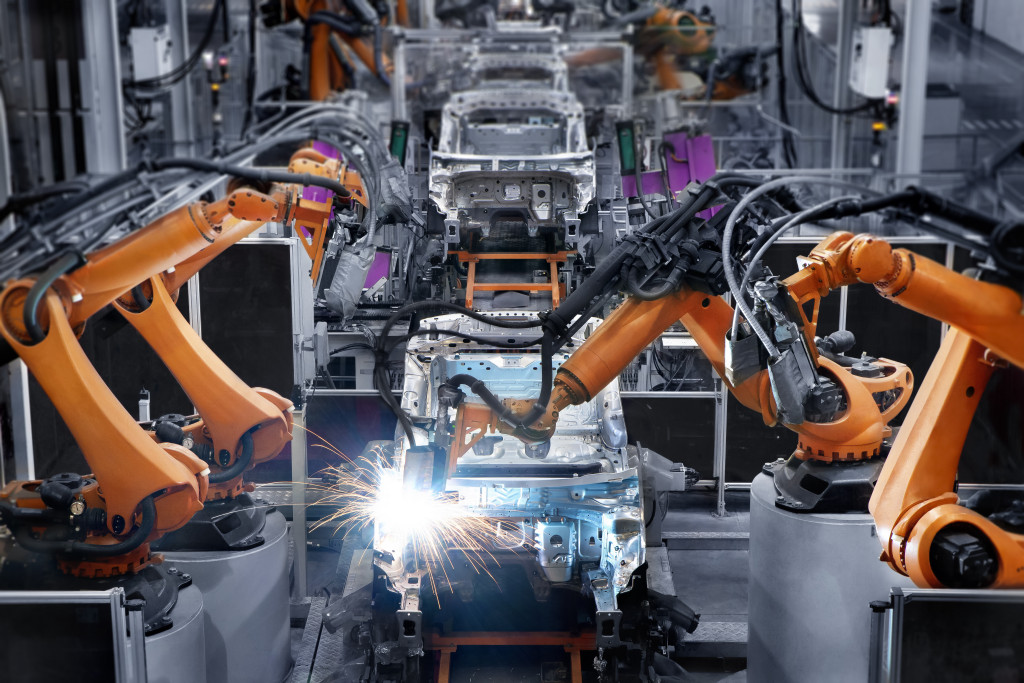- Automation in manufacturing is becoming increasingly important to improve efficiency and reduce costs.
- Investment in automation has been found to increase productivity by 10-30%, and ROI can be as high as 129%.
- Essential resources for successful automation projects include UL 508A panel builder, automation software, machine maintenance team, and robotic arms.
- To maximize return on investment, regular performance monitoring is necessary to ensure safety protocols are being met and production efficiency is maintained.
Automation in manufacturing is becoming increasingly important as businesses seek to improve efficiency and reduce costs. Automation allows companies to boost their productivity and accuracy while reducing labor costs. Automating machining operations and processes also increases production capacity and speeds up product delivery, improving customer experience.
Companies that invest in automation can reduce errors, increase quality control, and cut operating costs by streamlining processes. By automating everyday tasks such as drilling and cutting, the labor cost can be significantly reduced, leading to savings in wages, benefits, and training prices. Automating certain machining operations can also help eliminate repetitive motion injuries from manual labor employees.
According to a study from McKinsey & Company, investing in automation for manufacturing has been found to increase productivity by 10-30%. Additionally, one analysis showed that the average return on investment was 129% when robots were introduced into European factories. As automation becomes more advanced with the introduction of artificial intelligence (AI) algorithms and machine learning capabilities, this number is expected to continue growing over time.
Still, incorporating automation can be challenging if you don’t prepare for it. Here are a few steps to help you make the transition:
Identify Needs

Automating manufacturing operations is vital for improving efficiency and reducing costs. It is essential to identify where you can automate to maximize the benefit of automation. A few key areas to consider when automating processes include machining, packaging, assembly, and inspection.
Machining operations such as drilling, cutting, milling, and grinding can be automated with robotic arms or CNC machines. Automating these tasks reduces labor costs associated with manual labor and eliminates repetitive motion injuries from manual labor employees. Additionally, automation increases production capacity and speeds up product delivery.
Packaging processes such as labeling and wrapping can also be automated with robots or automated labeling systems. This helps with traceability during production by ensuring that each package is labeled correctly and tracked accurately throughout the supply chain. Mechanical packaging systems also reduce errors associated with manual labeling processes and help speed up product delivery.
Assembly operations such as screw and riveting can also be automated using robots or screw systems. Automating these tasks helps increase quality control, reduce errors associated with manual assembly processes, and improve production efficiency.
Secure Essential Resources

The importance of securing resources to automate manufacturing cannot be overstated. Booking the right resources significantly impacts the success of automating processes and can ensure that the transition is seamless and cost-effective. Here are four essential elements to consider when securing resources for manufacturing automation:
UL 508A Panel Builder
A UL 508A automation panel builder is essential for automating machining operations such as drilling, cutting, milling, and grinding. The panel builder instructs robots or CNC machines during the efficient process and ensures all safety protocols are met. A qualified panel builder with extensive experience in manufacturing automation will know industry requirements and standards, allowing them to create custom solutions that meet the specific needs of their clients.
Automation Software
Automation software is a vital resource when automating manufacturing processes as it provides the ability to monitor progress accurately throughout production cycles while ensuring compliance with safety regulations and standards. Automation software also helps reduce the human error associated with manual processes by providing automated reports that can be used for quality control purposes.
Machine Maintenance Team
A dedicated machine maintenance team is essential for successful automation projects, ensuring machinery is regularly serviced, repaired, or upgraded when needed. Regularly servicing machinery can help prevent breakdowns during production, significantly delaying product delivery and resulting in lost profits and customer dissatisfaction. Additionally, having a well-trained machine maintenance team can help identify areas where upgrades may be beneficial, improving production efficiency and increasing cost savings over time.
Robotic Arms
Robotic arms are essential when automating machining operations such as drilling, cutting, milling, and grinding. Robotic arms are typically mounted on a mobile frame or suspended from the ceiling, allowing for flexibility in production systems. Additionally, robotic arms can be programmed to perform various tasks quickly and accurately while adhering to safety protocols.
Monitor Effectiveness
Once you have identified the tasks that need to be automated and secured the essential resources, it is crucial to monitor the effectiveness of automation over time. Tracking the performance of automation can help identify areas for improvement and allow companies to adjust their processes as needed. Additionally, regular monitoring can ensure safety protocols are being met, and production efficiency is maintained.
Final Thoughts
Automating manufacturing operations is essential to improving productivity, reducing costs, and increasing customer satisfaction. Businesses can reap significant rewards from automating processes by taking the proper steps and investing in the right resources. With careful planning and continued monitoring, manufacturers can ensure they maximize their return on investment while providing a quality product at an efficient rate.
